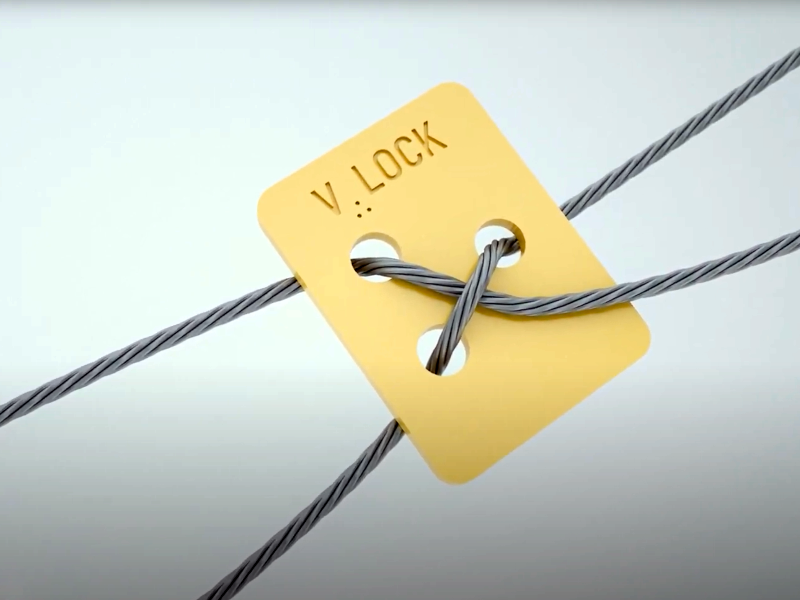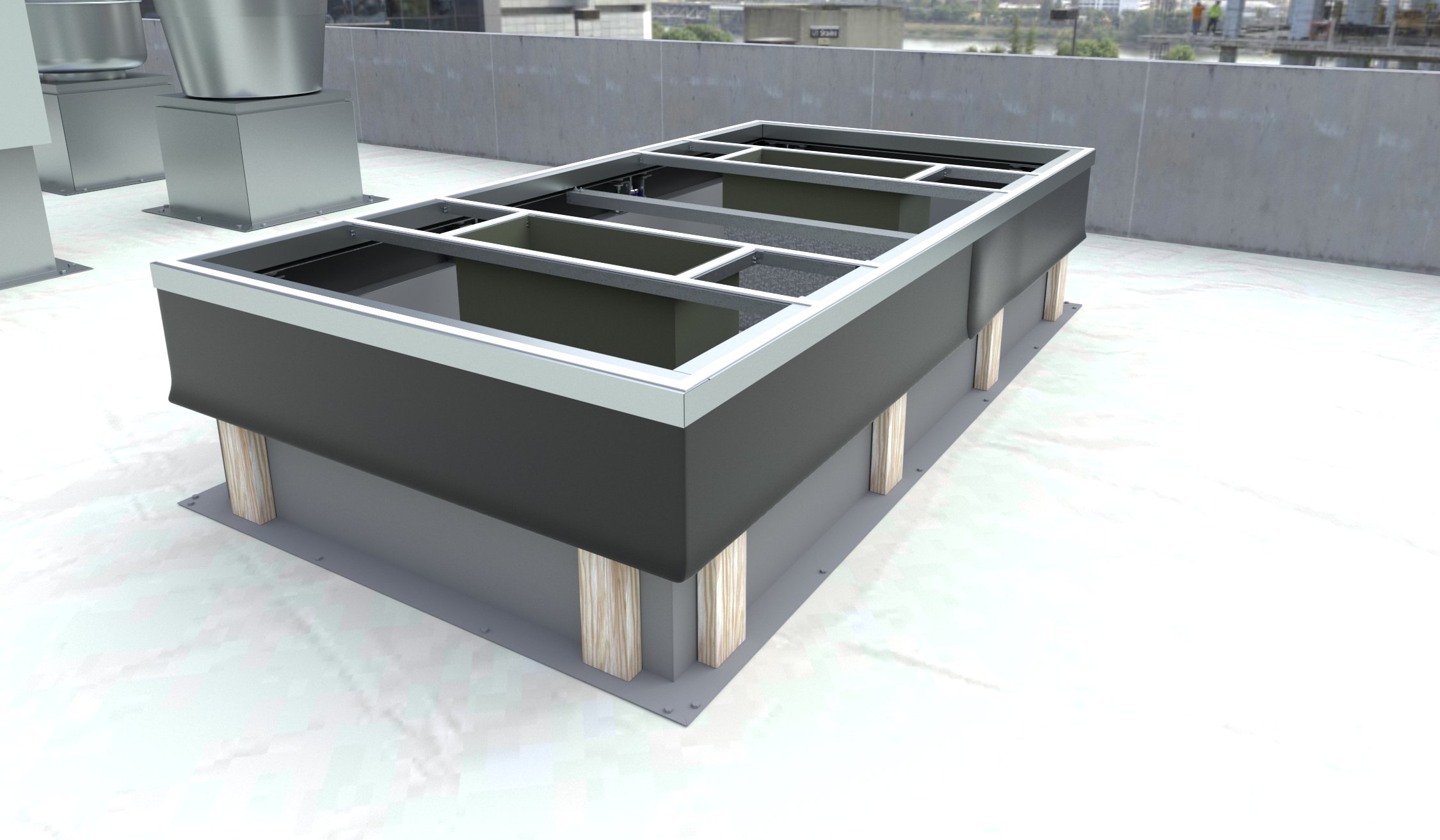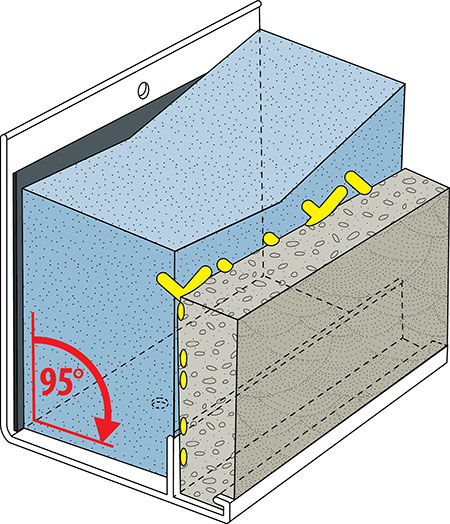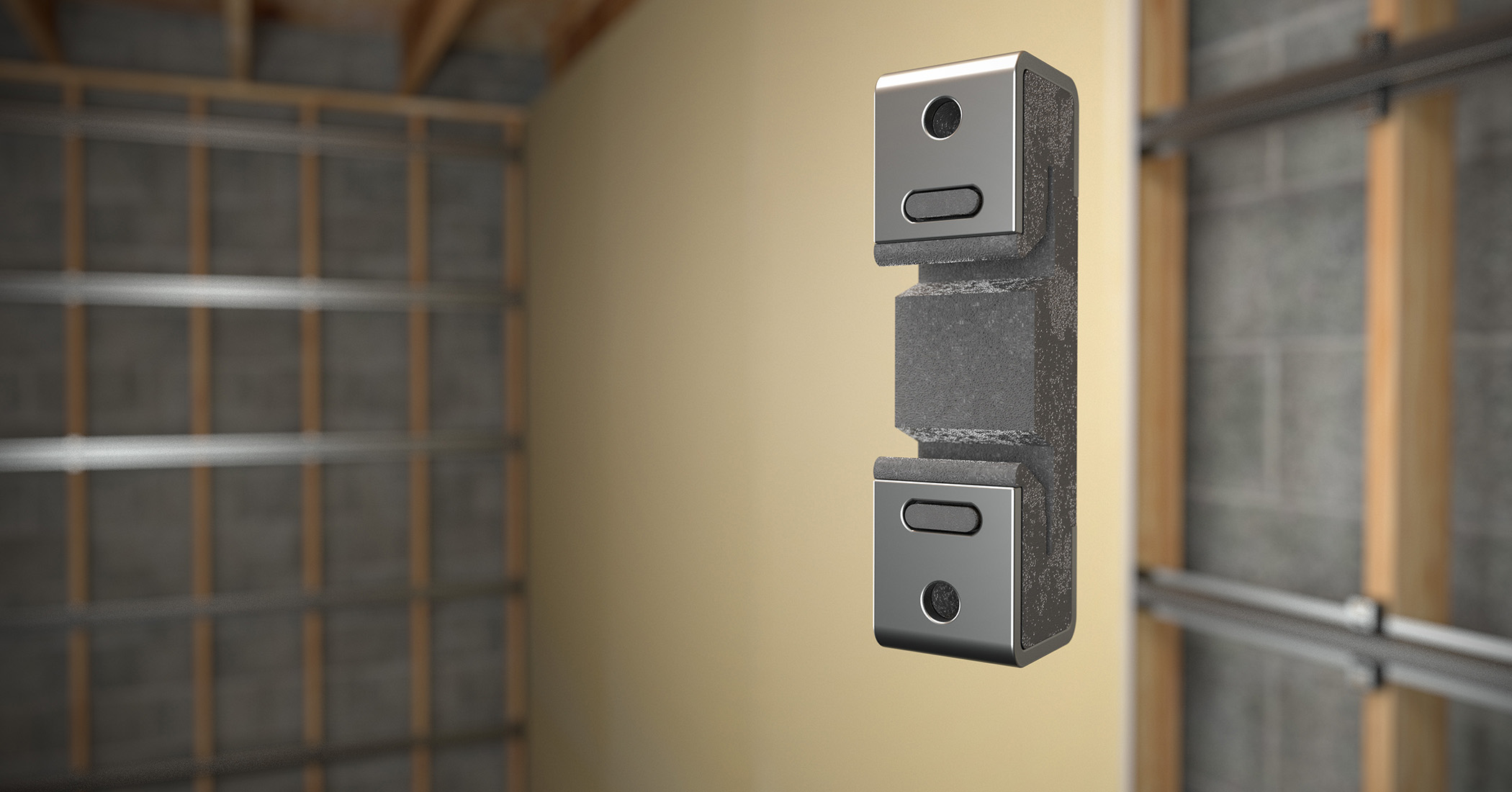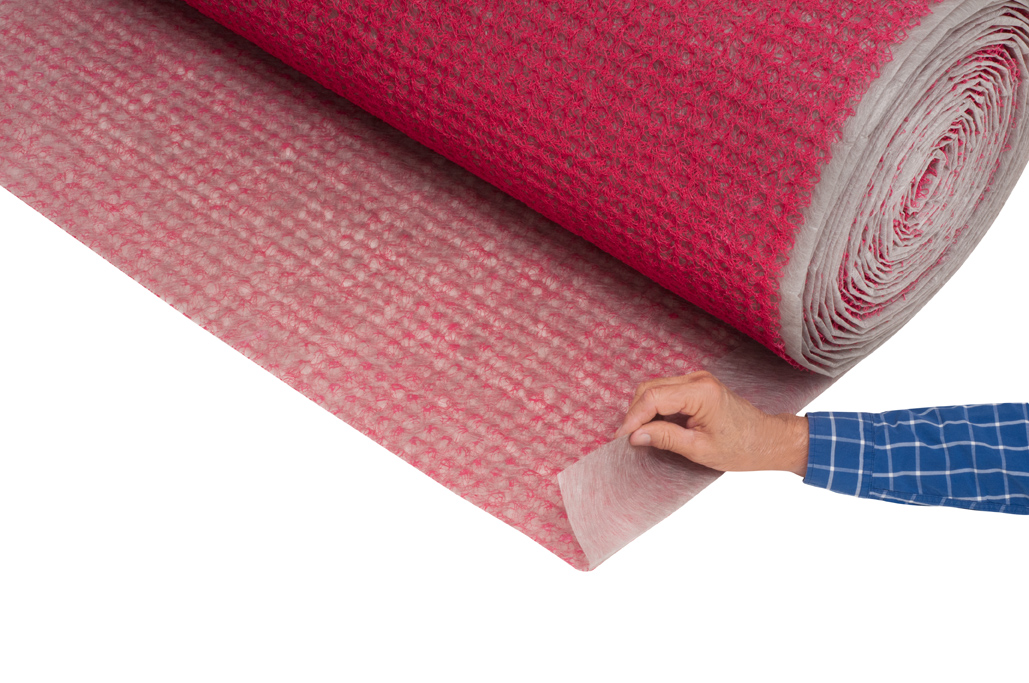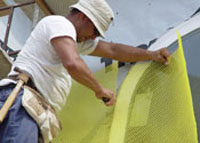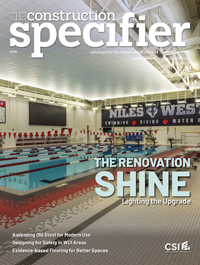Fully tempered glass and spontaneous fracture
Heat-soak testing
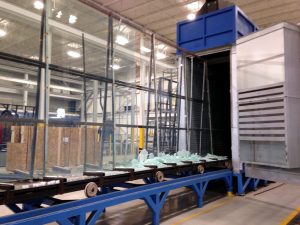
Photo courtesy Agnora
Heat-soak testing is a process whereby fully tempered glass is heated in a made-for-purpose heat soaking furnace and held at a specific temperature for a period of time to induce any NiS inclusions to undergo their phase transformation, and thus break the glass during the test in the furnace rather than on the building in-service (Figure 7).
There is currently no North American standard for heat soak testing. Some companies in North America perform heat soak testing in accordance with EN 14179-1, Heat Soaked Thermally Toughened Soda Lime Silicate Safety Glass or ISO 20657, Glass in building—Heat soaked tempered soda lime silicate safety glass, which generally includes the following requirements:
- dwell temperature of 260 C (500 F) +/- 10 C (18 F) (i.e. temperature below the annealing point at which the RCSS from tempering could be reduced)
- dwell time of two hours, commencing when all of the glass surfaces have reached the required temperature
- separation of glass panes without hindering airflow (e.g. minimum 20-mm [0.8-in.] gap between panes) to ensure even heat distribution around the glass surfaces
When carried out properly in accordance with EN-14179, heat-soak testing significantly reduces, but does not entirely eliminate, the risk of NiS-induced fracture in-service. The authors’ experience with NiS-induced breakage over the last 45 years shows a handful of isolated example of NiS-induced fractures in fully tempered glass panels that were reported to be heat-soak tested. While heat-soak testing is effective in reducing the risk of in-service spontaneous breakage due to NiS impurities, it is an imperfect process that requires careful quality control, and is not a guarantee. Further, heat-soak testing adds another step to the manufacturing process and comes at additional cost and production time. The spontaneous breakage in the furnace can also damage adjacent unaffected glass panels during the test. Also note, when heat soak tested properly, there should be a minimal-to-no effect on the surface compression of the fully tempered glass.
Some manufactures provide warranties to replace glass broken in-service due to verifiable NiS inclusions if the glass was heat-soak tested, and the breakage exceeds a certain percentage (e.g. greater than three lites per 1000 or 0.3 percent of the total number of glass panels). In this case, on a building with 400 glass panels, the owner is responsible for paying for the replacement of the first broken lite, and every other broken panel thereafter would be covered by the manufacturer. These warranties typically include the cost of the replacement glass material for a period of up to 10 years, however may or may not include installation labor which can be a significant cost of glass replacement, so should be reviewed carefully. These warranties, however, often do not cover mitigation or remediation measures (e.g. adding protective film to unbroken glass panes to help hold fragments in place in case future breakage occurs) or consequential injury/damages to people and property associated with spontaneous glass breakage.
A critical first step to reduce both risk and cost is to minimize the use of fully tempered glass in the first place. For example, if a high-rise, all glass curtain wall building is specified with all fully tempered, heat-soak tested glass, the risk of contamination is highest and price to heat soak all the glass would similarly be quite high. However, if the fully tempered glass is minimized to only where required (e.g. utilizing the safety glazing code exception[s] as discussion earlier), a significant percentage of the glass can be heat strengthened instead of fully tempered, thereby substantially reducing the risks of NiS-induced fracture and the cost of heat soak testing. Further, the costs for heat soak testing in North America has generally come down over recent years as more domestic glass manufacturers have upgraded production lines to now offer heat soaking.
Heat soak testing is becoming more common across the North American industry and is even required in some other countries. Many owners (including their funding sources, lenders, and insurance companies), architects, consultants, general contractors, and glazing contractors require that all fully tempered glass on their projects be heat soak tested, full stop. This is especially true for parties who have experienced NiS-induced breakage on their projects, which in some cases has resulted in significant financial and commercial hardship (including replacement of all glass suspected to be contaminated on the buildings), and they wish to minimize the potential for a repeat occurrence. Internationally, Australia’s National Construction Code (NCC), for example, requires heat soak testing glass in buildings when monolithic fully tempered glass is glazed more than 5m (16.4 ft) above a walking surface and the area below is not protected by a balcony or awning (refer to section 3.8 of AS 1288, Glass in Buildings – Selection and Installation).
Recommendations
The authors recommend consideration of the following when specifying glass on projects.
Use heat-strengthened glass at exterior applications wherever allowable for strength, as it provides greater strength to resist structural loads and thermal stress when compared to annealed glass, without the risk of spontaneous fracture and likelihood of post-fracture glass fall-out associated with fully tempered glass.
Understand the safety glazing requirements of Section 2406.4.3, Glazing in Windows, of the IBC 2024, and employ code exceptions to minimize the use of fully tempered glass.
Consider providing laminated glass to meet safety glazing requirements in lieu of monolithic fully tempered glass.
If these alternative options are not available for the project, and monolithic, fully tempered glass is unavoidable, the authors recommend the following:
- heat-soak test all monolithic, fully tempered glass in accordance with EN-14179
- utilize reputable glass manufacturers and fabricators who will address the risks associated with the use of fully tempered glass
- require QA/QC procedures of glass manufacturers to minimize risks of float glass contamination
- require factory logs documenting heat-soak testing of all monolithic, fully tempered glass on the project in accordance with EN-14179
- seek records of glass manufacturers’ past spontaneous breakage events and how they were resolved
Conclusion
Although the percentage of buildings experiencing spontaneous breakage of fully tempered glass due to NiS inclusions is low, if a batch of glass is contaminated, the incidence of breakage on a particular building can be quite high. Since the likelihood of spontaneous fracture of fully tempered glass is unpredictable, the issue needs to be addressed on all buildings for which the use of monolithic, fully tempered glass is being considered. Consider the risk of spontaneous breakage of fully tempered glass as the exterior lite of an IGU installed in an all-glass high-rise in a heavily populated downtown environment above active sidewalks—is this a tolerable risk the design and construction team is willing to take?
Owners do not expect the glass on their buildings to fracture spontaneously, inviting injury and damage, nor should they. After nearly 70 years of manufacturing knowledge about the inherent susceptibility of fully tempered glass to NiS-induced spontaneous fracture, and almost 40 years after the issuance of the first technical bulletin on the subject, it is time to fully address the issue, which continues to plague the industry to this day. For most projects, there are viable alternatives to the use of monolithic, fully tempered glass. Where monolithic, fully tempered glass is absolutely required, there are techniques to minimize these inherent risks. All parties of the design and construction team need to have frank, early discussions about these inherent risks to foster informed decision-making for the project at hand.
 Christopher J. Brandmeier, PE, is a senior consulting engineer with Simpson Gumpertz & Heger in Washington, D.C. Brandmeier holds bachelor and master of architectural engineering degrees from the Pennsylvania State University. He has more than 10 years of experience with curtain walls, custom glazing systems, structural glass, glass investigations, and glass re-glazing; as well as broad experience in new and rehabilitation design with various roofing and below-grade waterproofing systems. He can be reached at cjbrandmeier@sgh.com.
Christopher J. Brandmeier, PE, is a senior consulting engineer with Simpson Gumpertz & Heger in Washington, D.C. Brandmeier holds bachelor and master of architectural engineering degrees from the Pennsylvania State University. He has more than 10 years of experience with curtain walls, custom glazing systems, structural glass, glass investigations, and glass re-glazing; as well as broad experience in new and rehabilitation design with various roofing and below-grade waterproofing systems. He can be reached at cjbrandmeier@sgh.com.
 John A. Jackson, AIA, is an associate principal at Simpson, Gumpertz & Heger in Washington, D.C. Jackson holds bachelor of architecture and master of engineering (structural) degrees, from the Pennsylvania State University. He has more than 21 years of experience in building enclosure design and consulting, with particular expertise in curtain walls, custom glazing systems, structural glass, and glass investigations. He leads SGH’s glass and glazing systems practice area, is an active member of the ASTM Subcommittee E06.52, Glass Use in Buildings, and regularly delivers lectures and publications on building enclosure design. He can be reached at jajackson@sgh.com.
John A. Jackson, AIA, is an associate principal at Simpson, Gumpertz & Heger in Washington, D.C. Jackson holds bachelor of architecture and master of engineering (structural) degrees, from the Pennsylvania State University. He has more than 21 years of experience in building enclosure design and consulting, with particular expertise in curtain walls, custom glazing systems, structural glass, and glass investigations. He leads SGH’s glass and glazing systems practice area, is an active member of the ASTM Subcommittee E06.52, Glass Use in Buildings, and regularly delivers lectures and publications on building enclosure design. He can be reached at jajackson@sgh.com.
 Thomas A. Schwartz is the retired former president and head of building technology at Simpson Gumpertz & Heger in Boston, Mass. Schwartz holds a bachelor of science degree in civil engineering from the Tufts University and a master of science in materials engineering from the Massachusetts Institute of Technology. For more than 40 years, Schwartz has conducted field and laboratory investigations, and produced new and remedial designs for building enclosure systems, including curtain walls, glazing, roofing, waterproofing, and masonry. He has been active in national standards development and research on various topics related to the construction industry, is a fellow of ASTM International, and past chair of the ASTM board of directors.
Thomas A. Schwartz is the retired former president and head of building technology at Simpson Gumpertz & Heger in Boston, Mass. Schwartz holds a bachelor of science degree in civil engineering from the Tufts University and a master of science in materials engineering from the Massachusetts Institute of Technology. For more than 40 years, Schwartz has conducted field and laboratory investigations, and produced new and remedial designs for building enclosure systems, including curtain walls, glazing, roofing, waterproofing, and masonry. He has been active in national standards development and research on various topics related to the construction industry, is a fellow of ASTM International, and past chair of the ASTM board of directors.


